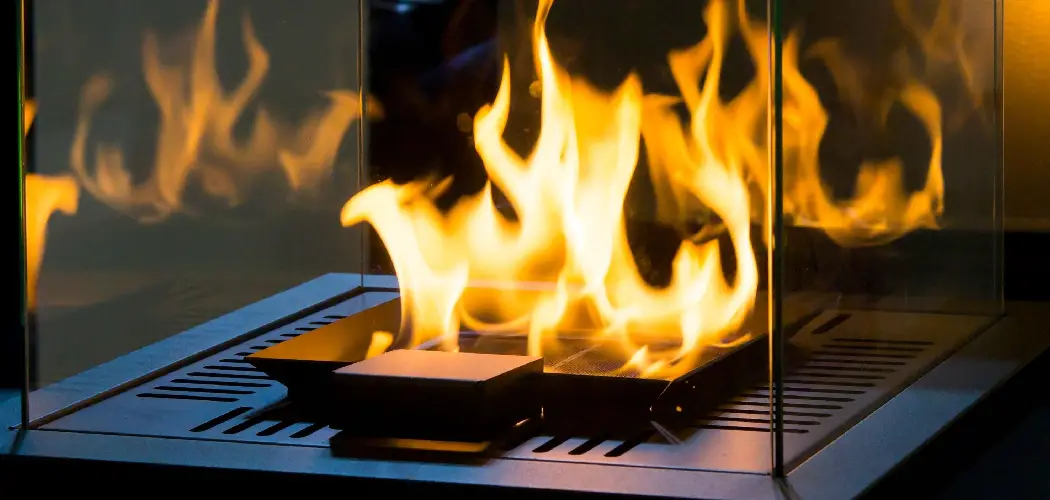A gas fireplace is a great way to add warmth and comfort to your home during winter. However, if you’re not getting enough heat from your gas fireplace, you can do a few things to improve the situation. This blog post will discuss how to get more heat from gas fireplace. We’ll also provide some tips on how to maximize your heating efficiency. So, if you’re looking for a way to stay warm this winter, read on.

What Causes a Gas Fireplace to Produce Less Heat?
There are a few reasons why your gas fireplace might not produce as much heat as it should. One possibility is that the gas line leading to your fireplace is not providing enough gas pressure. This can be caused by various issues, including a gas line blockage or a regulator problem. Another possibility is that the pilot light is not lit. If this is the case, you’ll need to relight the pilot light according to the manufacturer’s instructions. The other reason your gas fireplace might not provide enough heat is that the flue is not open.
The flue is a metal pipe that runs from the fireplace to the chimney. It’s important to keep the flue open at all times when the fireplace is in use. If the flue is closed, the hot air produced by the fireplace will be trapped inside, and this can cause a fire. Finally, another possibility is that the damper is not open. The damper is a metal door that covers the opening of the fireplace. Again, it’s important to open the damper before lighting the fireplace.
12 Simple Ways How to Get More Heat From Gas Fireplace
1. Adjust the Gas Pressure
The first thing you need to do is to check if the gas pressure is set correctly. If it’s too low, the fire will be weak and produce less heat. Too high, and the fire will be too strong and could damage your fireplace. To set the gas pressure, you’ll need a pressure gauge. You can buy one at your local hardware store.
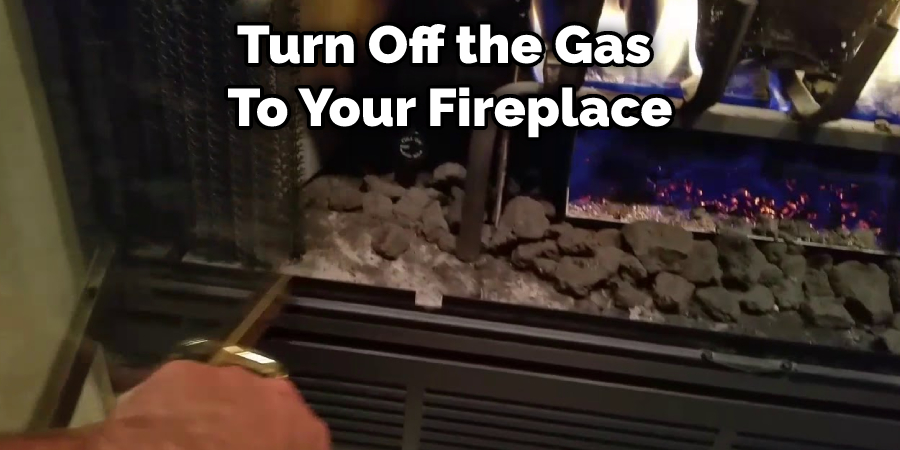
Once you have the gauge, first turn off the gas to your fireplace. Then, remove the cap from the pressure regulator and attach the gauge. Next, turn on the gas and check the reading on the gauge. It should be between 11 and 13 inches of water column pressure. You’ll need to adjust the gas pressure accordingly if it’s not.
2. Choose the Right Venting
There are two types of gas fireplaces: those that are vented and those that are unvented. Vented gas fireplaces send the hot air produced by the fire up the chimney. Unvented gas fireplaces don’t have a chimney and instead send the hot air into the room. To choose the right venting for your fireplace, you need to consider the size of the room, the type of fuel used, and the fireplace’s efficiency. If you’re not sure which type of venting is right for your fireplace, consult with a professional.
3. Upgrade Your Fireplace Insert
If you have an old fireplace insert, it might be time to upgrade to a newer model. Newer inserts are much more efficient and can provide more heat. You might also want to consider upgrading to a gas fireplace insert. Gas inserts are very efficient and can provide a lot of heat. If you have a wood-burning fireplace, you can also convert it to gas. Upgrade kits are available at most hardware stores.
4. Use a Fan to Help Move the Heat
If your fireplace is not providing enough heat, you can use a fan to help move the hot air around. There are two types of fans that can be used for this purpose. The first type is a floor fan. You can position the fan before the fireplace to help circulate the hot air. The second type of fan is a ceiling fan. Ceiling fans are more effective at circulating the hot air because they’re closer to the fireplace. If you have a ceiling fan, you can use it to help circulate the hot air from the fireplace. If you don’t have a ceiling fan, you can buy one at your local hardware store.
5. Use Glass Doors
Use glass doors on your fireplace to help trap in the heat. Glass doors will also help to keep the fire burning hotter. If you don’t have glass doors, you can buy them at your local hardware store. First, make sure that the doors are closed to use glass doors. Then, open the damper to allow air to flow into the fireplace. Next, build a small fire and close the glass doors. The fire will now be able to breathe and will burn hotter. If you want, you can also crack the doors to help regulate the airflow.
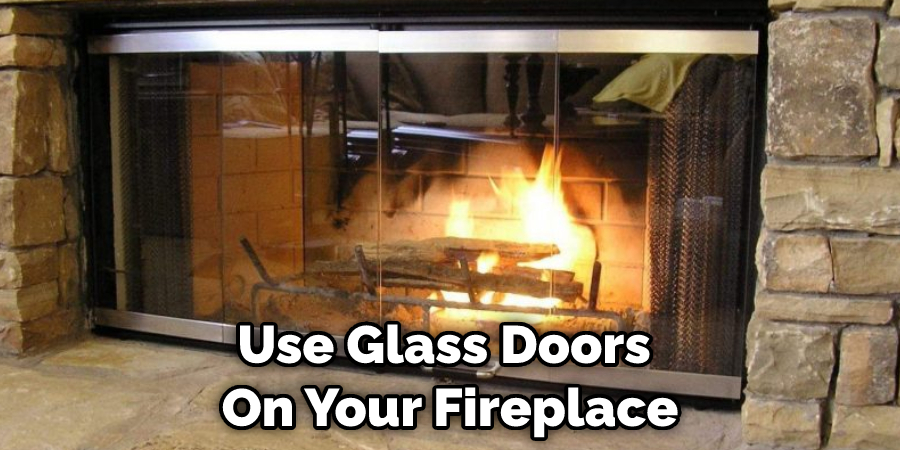
6. Get a Higher Btu Rating
When buying a new fireplace, make sure to get one with a high Btu rating. The higher the Btu rating, the more heat the fireplace will produce. Most home improvement stores will have a variety of fireplaces with different Btu ratings. If you’re not sure which one to choose, consult with a professional. Try to find a fireplace with a Btu rating of at least 60,000.
7. Use Dry Wood
Dry wood burns hotter than wet wood. When buying wood for your fireplace, make sure to buy kiln-dried wood. Kiln-dried wood has a moisture content of less than 20%. You can buy kiln-dried wood at most hardware stores. If you can’t find kiln-dried wood, you can also buy green wood and let it air dry for six months to a year.
8. Install a Damper
A damper is a metal plate that covers the opening of the chimney. The damper helps to regulate the airflow in the fireplace. By keeping the damper closed when the fireplace is not in use, you can help to keep the heat in. You can buy a damper at most hardware stores. To install the damper, first, make sure that the fireplace is cool. Then, remove the old damper from the chimney. Next, clean the chimney and install the new damper. Make sure that the damper is properly sealed to prevent heat from escaping. If you’re not sure how to install a damper, consult with a professional.
9. Use Fire Bricks
Fire bricks are made of a material that can withstand high temperatures. They’re used to line the inside of the fireplace. Fire bricks will help reflect the fire’s heat back into the room. You can buy fire bricks at most hardware stores. To use them, line the inside of your fireplace with fire bricks. Make sure to leave an opening in the back so that the fumes can escape. If you have a gas fireplace, you’ll need to make sure that the bricks are heat-resistant.
10. Avoid Soft Woods
Softwoods, such as pine and cedar, have a high moisture content. They burn quickly and don’t produce much heat. You should avoid using soft woods to get more heat from your fireplace. Hardwoods, such as oak and maple, have a lower moisture content. They burn slowly and produce more heat. When buying wood for your fireplace, make sure to buy hardwoods.
11. Upgrade Your Chimney
If you want to get more heat from your fireplace, you should upgrade your chimney. A taller chimney will allow the hot air to escape more quickly, making your fireplace more efficient. It would be best if you also consider upgrading to a stainless steel chimney liner, which will conduct heat better than a brick liner.
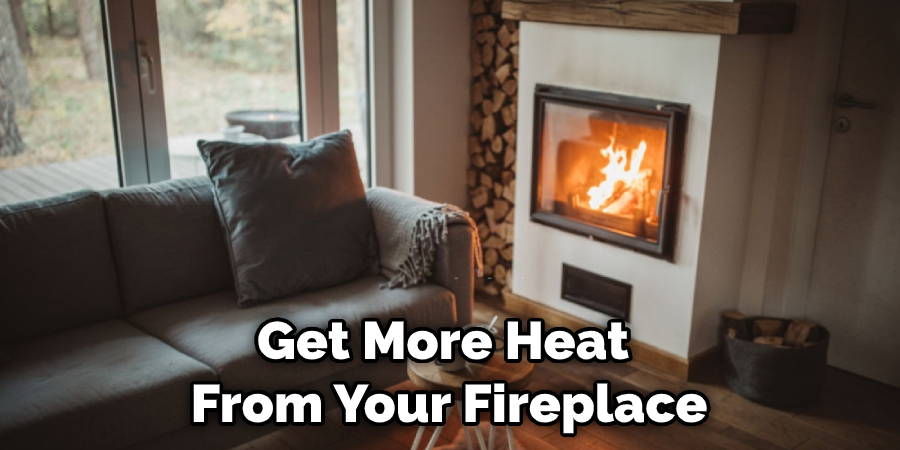
12. Consider Alternative Heating Methods
If you’re not getting enough heat from your fireplace, you may want to consider alternative heating methods. Electric heaters, wood stoves, and pellet stoves are all great options for supplemental heating. You can also try using a space heater in the room where you spend the most time. By using multiple heating sources, you can make sure that your home is always comfortable.
How Much Heat Does a Gas Fireplace Produce?
The average gas fireplace produces around 30,000 BTUs of heat. However, the amount of heat that a fireplace produces can vary depending on the model and the size of the fireplace. Some fireplaces can produce up to 60,000 BTUs of heat. If you want to get more heat from your fireplace, you should consider getting a model with a higher BTU rating.
How Long Does a Gas Fireplace Last?
A gas fireplace can last for many years if it is properly maintained. However, the lifespan of a gas fireplace will vary depending on the model and the quality of the materials. For example, some fireplaces may only last for ten years, while others may last for 20 years or more. If you want your fireplace to last long, you should buy a high-quality model and perform regular maintenance.
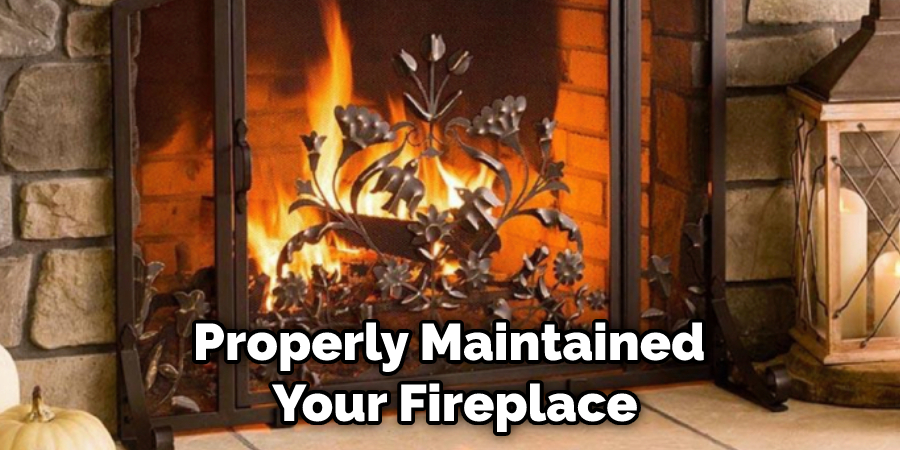
Conclusion
So this article has shown you How to Get More Heat From Gas Fireplace. By following these tips, you can ensure your fireplace is as efficient as possible. We hope that this article has been helpful. Thanks for reading.

